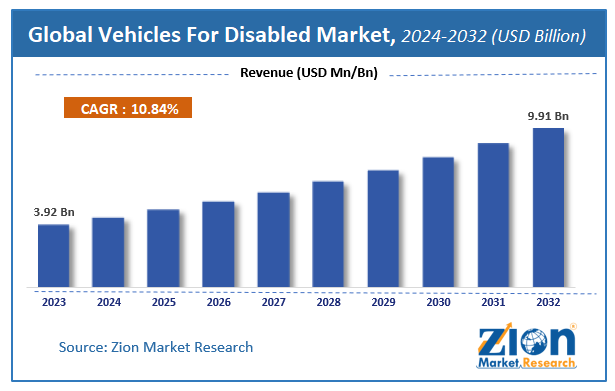The global market for vehicles designed for disabled individuals has experienced significant growth and is projected to expand further in the coming years. In 2023, the market was valued at around USD 8.34 billion, and it is expected to reach USD 15.2 billion by 2032, growing at a compound annual growth rate (CAGR) of approximately 6.9% during this period.
Key factors driving this growth include the increasing number of individuals with disabilities, rising awareness around mobility options, and technological advancements in assistive vehicle technologies. Government initiatives promoting inclusivity and infrastructure improvements have also contributed to market expansion. In particular, wheelchair-accessible vehicles and mobility scooters are some of the fastest-growing segments within the market, offering greater ease of transportation for individuals with mobility challenges.

Vehicles For Disabled Market
Regionally, North America holds the largest market share, with significant contributions from key players such as BraunAbility, Vantage Mobility International, and Revability. The Asia-Pacific region is expected to grow at the highest rate, driven by government initiatives and increased demand for accessible vehicles in countries like China, India, and Japan.
Technological innovations, such as the introduction of electric and hybrid wheelchair-accessible vehicles, and collaborations between major automotive manufacturers like Toyota, are also shaping the future of the market.
The Vehicles for Disabled market is segmented by various factors, including vehicle type, driving option, manufacturer type, and region. Here are the primary segments:
1. By Vehicle Type:
- Wheelchair Accessible Vehicles: Includes cars, vans, and SUVs modified for wheelchair access.
- Mobility Scooters: Electrically powered scooters designed for easier transport of disabled individuals.
- Handicap Motorcycles: Motorcycles adapted for people with mobility issues.
- Pick-up Trucks: Adapted trucks with modifications for accessible use.
- Passenger Cars: Standard cars with modifications to accommodate disabled drivers or passengers.
2. By Driving Option:
- Driving on Swivel Seat: Adapted seats that swivel to allow easier access.
- Driving Through Wheelchair: Vehicles where users can drive directly from their wheelchair.
- Driving on Normal Seat: Standard driving options but with other assistive technologies.
3. By Manufacturer Type:
- Original Equipment Manufacturer (OEM): Vehicles that come pre-built or factory-designed with accessibility features.
- Third-Party Customization: Vehicles that are adapted or modified by third-party companies to meet accessibility needs.
4. By Entry Configuration:
- Side Entry: Vehicles with ramps or lifts that allow entry from the side.
- Rear Entry: Vehicles with entry mechanisms that provide access from the rear.
5. By Region:
- North America: Largest market with key players and strong demand.
- Europe: Growing demand, particularly in the UK, Germany, and France.
- Asia Pacific: Fastest-growing region, driven by increasing awareness and government initiatives.
- Latin America and Middle East & Africa: Emerging markets with growing accessibility needs.
These segments highlight the diversity in the vehicles for disabled market, catering to different mobility challenges and preferences
#DisabledMarket #VehiclesDisabledMarket
